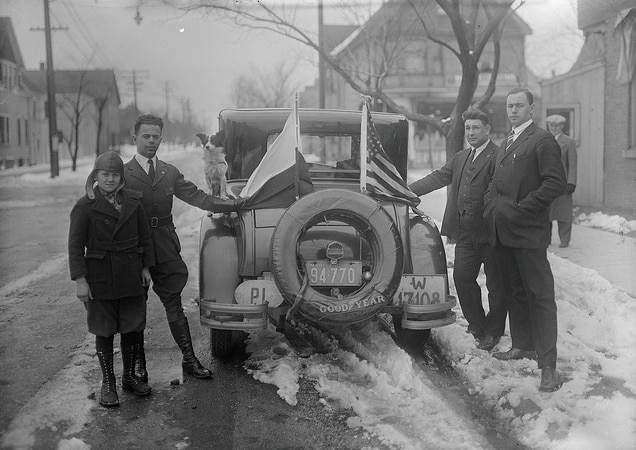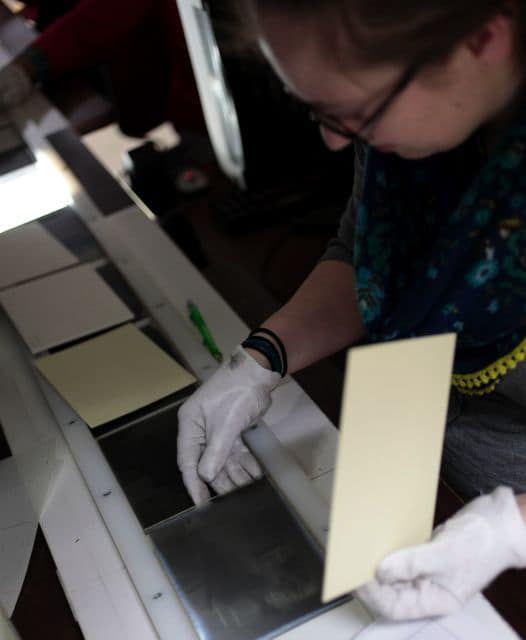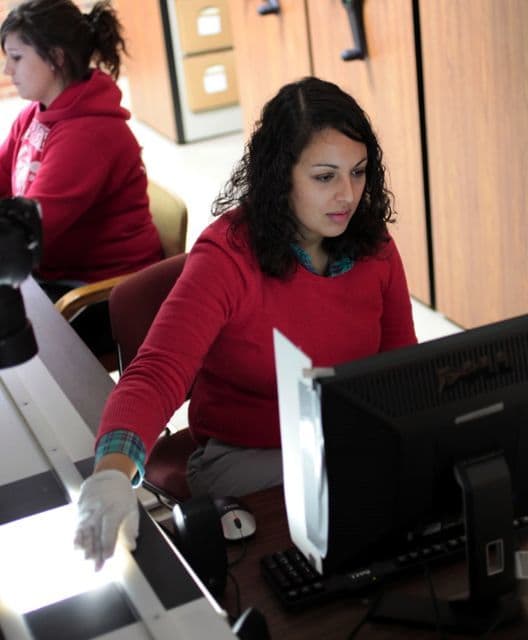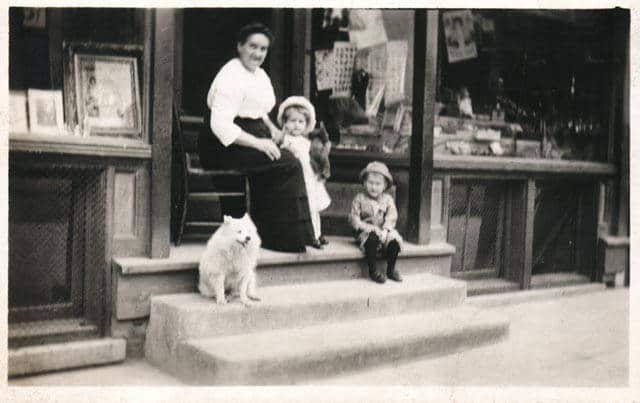The digital collections team at the University of Wisconsin-Milwaukee Libraries is in the midst of an ambitious project to digitize more than 25,000 glass plate negatives by Milwaukee photographer Roman Kwasniewski. From 1907-1947, Kwasniewski worked as a studio photographer in the Polish-American community on Milwaukee’s south side, documenting social events such as First Communions, Confirmations, graduations, weddings, and anniversaries as well as day-to-day life in the neighborhood. Together, these photographs offer a portrait of Milwaukee’s second largest ethnic group in the first half of the 20th century.

Just as interesting as Kwasniewski’s photographs are the methods UWM has developed to rapidly and efficiently digitize this immense collection. In less than six months, library staff and student employees have imaged nearly 26,400 original negatives, using a unique “digital assembly line” process designed by Jim Lowrey, Assistant Director of Libraries.

Project Manager Molly Kahn described this workflow for the UW-Milwaukee Digital Collections blog:
Using a Nikon D800 camera to capture high quality images, a three person team mans an assembly line-style operation. One person unwraps the archival sleeves that protect the glass slides; the second person snaps the image via a stationary camera mounted over a lightbox, and monitors image quality and organization of the slides; the third person re-wraps the slides, places them back in a box in the correct order, and processes and checks previous image files. This process means that the glass negatives are never off the shelves for more than a few hours, and a single day’s work can produce upwards of 500 digital images. The uniform dimensions and very good physical condition of the negative make this mass digitization approach possible.
Each image receives minimal processing in Photoshop. They are inverted, converted to gray scale and cropped in batches grouped by the date the photograph was taken. I then have students check the images to ensure they are processed correctly and rotate the images that are oriented incorrectly.

We asked Molly about her experiences working with this unique collection:
I have really enjoyed working with these materials and seeing Milwaukee’s Polonia through the lens of Roman Kwasniewski. Because he was a important photographer for that community, you get to see people in multiple areas of life including special celebrations, everyday life, businesses and recreational areas that were central to the community. Kwasniewski was able to venture out beyond the traditional boundaries of professional photography and capture people constructing buildings, fixing roads, and dealing with car accidents and insurance claims. I feel like I have learned a lot about Milwaukee and the people of Milwaukee through these photographs, and it is interesting to see how the area has changed since the 1920s and 1930s.
Kwasniewski kept this collection in very good order, and assigned his own system of serial numbers and subject categories. His careful attention to subject, person, address, and names of places have contributed greatly to the metadata of this collection, and made it possible to associate people with names and places.

The entire Kwasniewski collection will be available online in late 2013. Find more updates on the project–and read more about UWM’s many other digitization efforts–on the University of Wisconsin-Milwaukee Digital Collections blog.
Examples of Kwasniewski’s work can currently be viewed in UWM’s “Milwaukee Neighborhoods: Photos and Maps 1885-1992” digital collection and the Milwaukee Photographic Memory Flickr page.
Read more about Kwasniewski and Milwaukee’s Polonia in Christel T. Maas, Illuminating the Particular: Photographs of Milwaukee’s Polish South Side (Wisconsin Historical Society Press).




You must be logged in to post a comment.